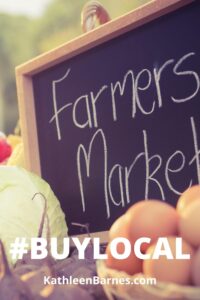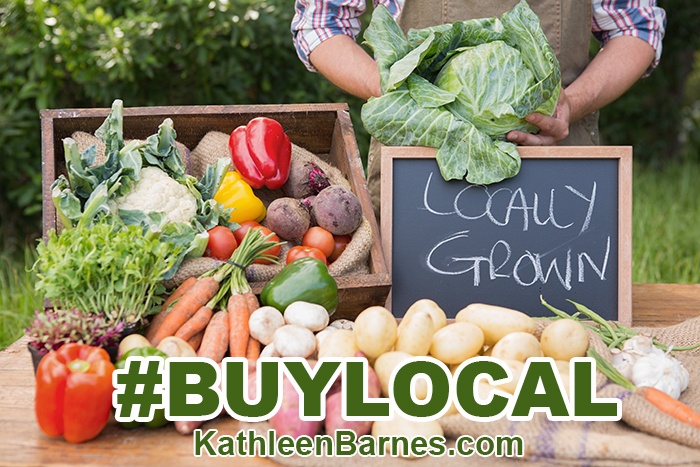 You’ve no doubt seen the “Buy Local” bumper stickers around town and maybe wondered what the big deal is.
You’ve no doubt seen the “Buy Local” bumper stickers around town and maybe wondered what the big deal is.
Now that spring is in full swing and early crops are starting to come in, there’s no better time to get your hands on the freshest, most nutritious food possible.
If you’re growing your own garden, more power to you! You can get your food from garden to mouth in a matter of minutes. If you’re like me, that may be a mere matter of seconds. I eat asparagus, tomatoes, cukes raw right there in the garden. Much of my home-grown produce never even gets inside the house!
So you’re not a farmer type? You don’t have space for a big garden? No time? What are your options?
Farmers’ markets
Here in our little mountain town, the Saturday Farmer’s Market is a social event. Everybody who is anybody is there, snagging Swiss chard, kale, radishes, lettuces and spinach. Lush, delicious strawberries are just coming in this week and it won’t be long before we start seeing broccoli, cabbage and cucumbers. Plus there are local meats, eggs, honey, herbs, cut flowers and even plants for our own gardens.
Like most farmers markets, ours has a rule that the products sold must be locally produced. This keeps vendors from coming in and re-selling California-grown tomatoes they’ve bought wholesale or grapes from Peru.
This means the food is fresh. We know that fruits and vegetables begin to lose their nutrients the moment they are picked (that’s why frozen produce is often a good choice in winter). If your broccoli was grown in California and shipped in a refrigerated truck 3,000 miles to your home, it probably took at least a week. Imagine how the nutrient value of that broccoli compares to a stalk of broccoli picked this morning, transported to the farmers market and on your table tonight!
In our area, there are few farmers who produced certified organic produce. I know, and I know you know, how important it is to eat organic. However, in my conversations with vendors at the farmers’ market, I’ve learned which ones are producing their crops in forms as close to organic as possible and I’m comfortable with that. It’s difficult, time consuming and expensive to get an organic certification, but many of these farmers are truly dedicated to producing clean, healthy food. You can easily identify the ones who are producing clean food by engaging them in conversation. I encourage you to do so regularly. Things can change over time, so it’s probably a good idea to re-visit the conversation with your farmer on a regular basis.
Community Supported Agriculture (CSAs)
This is a unique and interesting model of supporting local farmers, getting the freshest produce. You pay an up-front fee at the beginning of the season and get a box of produce every week, usually for 24 weeks in our area. The cost is modest, about $15-$20 a week for a box that will feed one or two people for a week. Prices will vary depending on your area. We even have several certified organic farmers offering CSA shares in our small rural area.
Some CSAs even allow barter for labor for those who like to get their hands in the dirt.
According to the CSA website, localharvest.org, CSAs provide distinct advantages for farmers and consumers:
Advantages for farmers:
- Get to spend time marketing the food early in the year, before their 16 hour days in the field begin
- Receive payment early in the season, which helps with the farm’s cash flow
- Have an opportunity to get to know the people who eat the food they grow
Advantages for consumers:
- Eat ultra-fresh food, with all the flavor and vitamin benefits
- Get exposed to new vegetables and new ways of cooking
- Usually get to visit the farm at least once a season
- Find that kids typically favor food from “their” farm even veggies they’ve never been known to eat
- Develop a relationship with the farmer who grows their food and learn more about how food is grown
However you do it, buy local produce and enjoy the bounty of summer!







